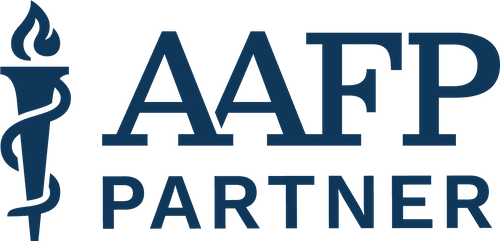Reflections from Nashville: Advocating for the Future of Primary Care at the 2025 AAFP Corporate Roundtable

Last week, I had the privilege of representing Elation Health at the American Academy of Family Physicians’ (AAFP) annual Corporate Roundtable in Nashville. This gathering brings together leaders from across the healthcare ecosystem— health technology, laboratories, research, pharmaceuticals, insurance, and more—alongside AAFP leadership to explore the biggest challenges and greatest opportunities facing family medicine today. It’s a chance to listen, learn, and collaborate—and this year, more than ever, I showed up eager to hear how the AAFP is rising to meet the moment.
This was my fourth time attending, and I estimate around 40-50 attendees joined us in Nashville. While it’s always a meaningful event, I was particularly interested this year in the AAFP’s posture on advocacy and how they’re supporting family physicians in an increasingly complex healthcare landscape.
A Powerful Call to Action from AAFP Leadership
AAFP CEO Shawn Martin opened the event with some candid and powerful statements that were as sobering as they were inspiring. He acknowledged the uncertainties and challenges of our current healthcare climate with striking honesty:
“I don’t know that it’s going to be okay. It’s okay to be scared.”
“We’re going to be thoughtful about our approach, and if the day comes when thoughtful doesn’t work, we’re going to fight.”
These words set the tone for the rest of the event. The message was clear: the AAFP not only recognizes the mounting pressures on primary care—they’re preparing to stand firm, speak up, and advocate for change.

Family Medicine by the Numbers: What the Data Tell Us
We heard several key data points that helped contextualize the current state of family medicine:
-
AAFP membership stands at 128,300, with 73,500 actively practicing physicians.
-
75% of family physicians are employed.
-
50% work for hospitals or health systems, 9% for FQHCs.
-
Only 23% own or partially own their practice—an important figure to monitor as independent practice continues to decline.
What’s both troubling and motivating is that trust in primary care is rising, even as trust in broader medical and scientific institutions has dropped precipitously post-COVID. In fact, primary care physicians are now the most trusted source of health information—second only to “myself.” That’s a remarkable opportunity for leadership, influence, and change.
To Make America Healthy Again, Start with Primary Care
A recurring theme throughout the event was the idea that to “Make America Healthy Again” (MAHA), we must start by rebuilding and reinvesting in primary care.
Chronic disease continues to place immense strain on the healthcare system. At the same time, massive health inequities—exacerbated by geography, income, race, and access—are only widening. Since 1980, the death rate gap between rich and poor in America has increased by a staggering 570 percent. These are not just policy problems—they are deeply human ones.
Primary care is uniquely positioned to lead the response:
-
It is the only medical discipline proven to close health equity gaps.
-
It is the most trusted advisor in healthcare today.
-
It is the frontline of prevention, early intervention, and chronic disease management.
Yet despite its potential, the U.S. continues to underinvest. Only 3.5 percent of Medicare spending goes to primary care. Compare that to 15–18 percent in Europe, or 22 percent in Japan, and the problem becomes glaring.
The average American believes we spend 50 percent of our healthcare dollars on primary care. Imagine if we actually did. As a nation, we have a rare window of opportunity to tie primary care to the broader effort to Make America Healthy Again—not as a political slogan, but as a national imperative.
Learning from Employers: Boeing’s Bold Bet on Primary Care
One of the most compelling sessions featured Michelle Neblett of Boeing, who shared how the company is rethinking healthcare spending for its 450,000 covered lives. Boeing’s data showed that employees with chronic conditions who received team-based, high-touch primary care experienced:
-
A 20 percent reduction in total cost of care
-
A 56 percent increase in productivity, measured by missed work days
In response, Boeing has expanded into Direct Primary Care (DPC) contracts and launched new care models like onsite and nearsite clinics through Crossover Health—with “through the roof” patient satisfaction. As Michelle summed it up:
“It really all boils down to primary care.”
Innovation on the Horizon
A panel of innovative primary care physicians shared how they’re using technology to enhance care and reduce burden. One physician noted that an AI scribe had cut his time at the computer by 60-70 percent. Other promising AI use cases included:
-
Tools for medication reconciliation and drug interaction checks
-
Platforms to create integrated treatment plans using patient data, care pathways, and risk calculators
Advocacy in Action: Primary Care Collaborative Meeting
While in Nashville, I also joined the Primary Care Collaborative Policy & Advocacy Committee meeting virtually. Key updates included:
-
Elation’s advocacy through a joint letter to the Senate urging the protection of Medicaid amid proposed cuts.
-
The passage of the House bill H.R. 919, which would allow chronic disease-related preventive services to be covered pre-deductible in high-deductible health plans.
-
The growing bipartisan support for payment reform and recognition that chronic disease is the top healthcare challenge—and that primary care is key to addressing it.
Despite the discontinuation of value-based models like Primary Care First and Making Care Primary, CMS maintains that primary care is still a strategic priority. The focus now appears to be toward exploring alternative models that align better with the agency’s statutory savings goals.
Individuals are encouraged to advocate for the protection of Medicaid funding by sending a letter to their congressional members using this template from Families USA.
Final Thoughts
From frank conversations about the erosion of trust and chronic underinvestment in primary care, to real-world examples of employer innovation, to the AAFP’s unwavering commitment to advocacy—this year’s Corporate Roundtable was a compelling reminder of why this work matters.
Primary care isn’t just a healthcare setting. It’s a solution—to worsening health inequities, rising costs, and the growing burden of chronic disease. The more we elevate and invest in it, the healthier our country can be.
Let’s keep the conversation going—and the momentum building.
If you're interested in reading more about the importance of trust in primary care, check out my recent LinkedIn Newsletter on the topic.
